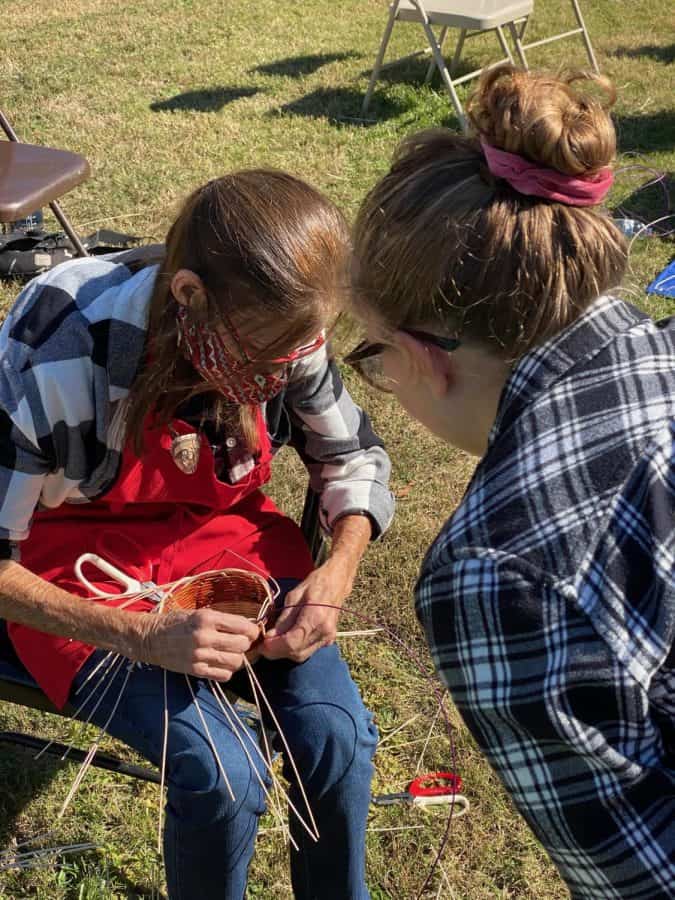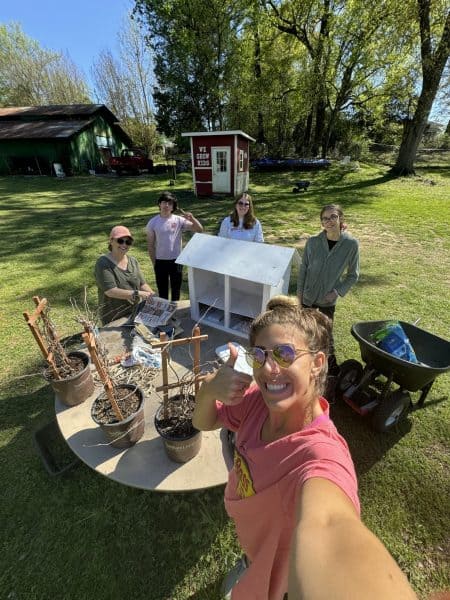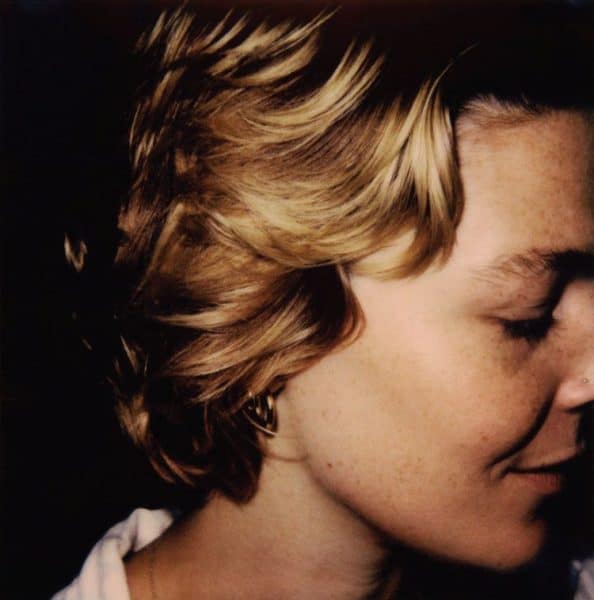‘This is living history’: UA highlights Muscogee artist Mary Smith
Mary Smith shows UA student Riva Cullinan how to weave a basket.
November 28, 2021
In 2009, Mary Smith, an award-winning artist and a member of the Muscogee Nation, handwove a traditional feathered cloak for three months for a permanent display at Moundville Archaeological Park.
Now Smith’s intricately woven mats and baskets, tiny corn husk dolls, and detailed pottery are featured in the “Weaving Muscogee Creek Culture: The Artistry of Mary Smith” exhibit at the Transportation Museum.
While teaching museum education and exhibits at The University of Alabama in the spring, Alex Benitez, the director of Moundville Archaeological Park, collaborated with Katherine Edge, the director of the Mildred Westervelt Warner Transportation Museum.
They allowed students to create a temporary exhibit at the Transportation Museum instead of a mock exhibit. While creating the exhibit, Benitez and Edge remembered Smith’s previous work with the park and showcased her work in the exhibit.
Edge said the goal of this exhibit was to highlight Native Americans in contemporary spaces.
Moundville Archaeological Park is a historic site that primarily displays the early history of the land. The Transportation Museum is a local museum that focuses on the city of Tuscaloosa’s modern history through the lens of transportation.
“We felt like this [exhibit] was a really good way of blending those two worlds together and presenting a contemporary Native American artist in a more contemporary space,” Edge said.
Smith is credited with reintroducing the traditional double-false braid rim. The technique had not been practiced in the last 100 years. When Smith received a basket, woven by a Muscogee woman, that had been passed down through generations of a family, she wanted to learn the technique and replicate it.
“The Southeastern Tribes had their own rimming method,” she said. “Most of them were doubled around, so when you look at the rim, you would know it was a Muscogee woman who had woven that basket. I wanted my baskets to be traditional.”
Smith studied the basket for two weeks until she learned to weave it herself. Like the basket, many of her projects take hours to make. When she is creating a mat, Smith said she quits tracking her time after 400 hours.
Though this basket and her other creations, such as mats and pottery, are now considered art, Smith said these items have a deeper traditional history.
“I would hope my art would tell [students] that what we now consider art was created by our ancestors by necessity out of everyday living,” she said. “Learn about the Native art, and appreciate the time that it took to make it.”
Riva Cullinan, a graduate student in the history department, was one of the students in the museum education and exhibits class. She worked over the summer, communicating with Smith and creating educational material now available at the exhibit.
Both Cullinan and Edge said they hope this exhibit demonstrates to students that Native American culture is not a thing of the past.
“There’s this idea in all of America that Native Americans are gone. That is very incorrect,” Cullinan said. “This is living history, and it is changing and evolving like everything else.”
On Nov. 6, Smith visited Tuscaloosa and hosted “Weave with Mary: Meet the Artist,” a class where she taught attendees how to weave their own baskets and shared stories from her life. She demonstrated her weaving on Nov. 10 at the Intercultural Diversity Center.
“I consider it an honor to be recognized by such a prestigious university and that they place an emphasis on Native American culture,” Smith said.
Smith has an award-winning mat featured in the “Lost Realms of the Moundbuilders” exhibition at the Birmingham Museum of Art. The University of Alabama took a field trip to the exhibit on Nov. 23.
“Weaving Muscogee Creek Culture: The Artistry of Mary Smith” will be at the Mildred Westervelt Warner Transportation Museum until March 2022.
Smith’s exhibit is just one event students can attend for Native American Heritage Month.
The Intercultural Diversity Center collaborated with Moundville Archaeological Park to produce the Millennia of Movement Exhibit, open through Jan. 4. The exhibit features replicas and artifacts of both ancient and contemporary southeastern Native Americans relating to culture and movement.
Throughout the month, The University of Alabama also hosted events such as stargazing at Moundville, a Native American Film Festival, a Moundville 5K, a TEDTalk Tuesday raising awareness for missing and murdered indigenous women, and a demonstration by artist John Brown.











